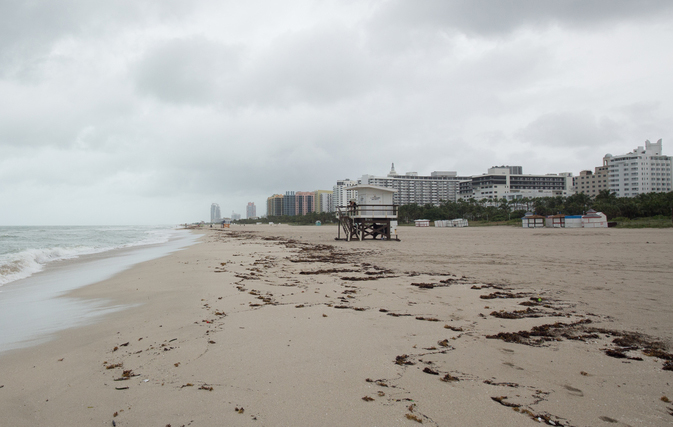CAPE CANAVERAL, Fla. — Hurricane Matthew scraped Florida’s Atlantic coast early Friday, toppling trees and knocking out power to a half-million people, but sparing some of the most heavily populated stretches of shoreline the catastrophic blow many had feared.
Authorities warned that the danger was far from over, with hundreds of miles of coastline in Florida, Georgia and South Carolina still under threat of torrential rain and dangerous storm surge as the hurricane pushed north.
“Remember, it could be the worst of it is yet to come,” Gov. Rick Scott said in the morning.
Matthew was downgraded to a Category 3 hurricane overnight, and its storm centre hung just offshore as it moved up the Florida coastline, sparing communities its full 120 mph winds. Still, it got close enough to knock down trees and power lines, and a 107 mph gust was recorded at Cape Canaveral.
As the storm closed in, an estimated two million people in Florida, Georgia and South Carolina were warned to move inland to escape the fury of the most powerful hurricane to menace the U.S. Atlantic coast in more than a decade.
Matthew left more than 280 people dead in its wake across the Caribbean.
As it moved on to Florida, it largely skirted the Miami-Fort Lauderdale-Palm Beach areas of over seven million people and hugged closer to the coast farther north, menacing such communities as Vero Beach, Daytona Beach, Cape Canaveral and Jacksonville.
Florida’s governor called it a “blessing” that so far Florida was avoiding a direct hit as the storm sliced northward.
Still, forecasters said it could dump up to 15 inches of rain in some spots and cause a storm surge of nine feet or more. They said the major threat to the Southeast would not be the winds – which newer buildings can withstand – but the massive surge of seawater that could wash over coastal communities.
The Fort Lauderdale and Orlando airports shut down. Airlines cancelled more than 3,000 flights Thursday and Friday, many of them in or out of Miami and Fort Lauderdale. Amtrak suspended train service between Miami and New York, and cruise lines rerouted ships to avoid the storm, which in some cases will mean more days at sea.
Orlando’s world-famous theme parks – Walt Disney World, Universal Studios and SeaWorld – all closed.
Thousands of people hunkered down in schools converted to shelters, and inland hotels in places such as Charlotte, North Carolina, reported brisk business.
The last Category 3 storm or higher to hit the U.S. was Wilma in October 2005. It sliced across Florida with 120 mph winds, killing five people and causing an estimated $21 billion in damage.
